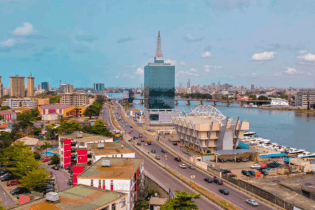The National Treasury has welcomed the International Monetary Fund’s (IMF’s) assessment, in its latest report on South Africa, that the country has a stable and resilient economy but one that could do much better.
The IMF released the outcome of its annual Article IV Consultation with South Africa on Thursday, following a visit to the country by IMF executive board members. Revised growth forecastIn its report, the Washington-based lender revised South Africa’s growth forecast down to 2.6% for 2012 and to 3.4% for 2013. This is marginally below the forecasts – of 2.7% for 2012 and 3.6% for 2013 – made by Finance Minister Pravin Gordhan in his Budget speech in February. The IMF attributes the slowdown to the ongoing debt crisis in Europe, South Africa’s main regional trading partner. The report highlights external risks to South Africa’s outlook, including renewed concerns about the euro area and signs of a slowdown in China that could result in slower demand for South Africa’s exports and a further decline in commodity prices. Domestic risks
At the same time, the report also identifies domestic risks, including lingering external competitiveness problems, a growing public sector wage bill, and the need to create more labour-intensive growth. The IMF commends South Africa’s fiscal and monetary policy approach, saying its fiscal stance has provided further stimulus to the local economy given weak external demand and a negative output gap, and that the pace of fiscal consolidation outlined over the budget horizon is broadly adequate. However, the report identifies the country’s growing public sector wage bill as a concern, arguing that the balance of public spending needs to shifted more in favour of capital spending. The IMF says South Africa’s flexible exchange rate is an important shock absorber, helping to smooth the impact of external shocks. At the same time, the IMF staff found various indicators pointing to continuing problems with external competitiveness as a result of high domestic costs of production, including unit labour costs. High unemployment rate
Importantly, the IMF argues that the country needs to take more action to create labour-intensive growth. While welcoming the focus on job creation in the government’s New Growth Path and the draft National Development Plan, the IMF says concrete actions are needed to support this, while suggesting that the structure of local product and labour markets may make it difficult for South Africa to reduce unemployment. “If not addressed, the stubbornly high unemployment rate could become politically and socially unsustainable,” the IMF states.
“South Africa needs to build on its many policy successes to expand employment opportunities, secure better education and health outcomes, and build more efficient infrastructure to support inclusive growth, while maintaining macroeconomic and financial stability in a risky global environment.
“Active labor market policies can help in the short term, but a sustainable reduction in unemployment seems unattainable without labour and product market reforms.” Financial institutionsThe report notes that South Africa’s financial institutions are largely unaffected by the crisis in the global financial system, and remain “sound, liquid, and profitable”. The IMF directors “encouraged continued vigilance in monitoring underlying risks, including banks’ dependence on short-term wholesale funding, and their large exposure to home mortgages and highly indebted households”. The Reserve Bank said on Thursday that many of the issues raised by the IMF report “are already reflected in the priorities and outcomes that government has set itself, including work on inclusive growth, policies aimed at accelerating job creation, and measures to improve the efficiency and effectiveness of government spending”. Export competitiveness
On external competitiveness, the Reserve Bank noted that the rand exchange rate had, over the past 12 months, depreciated by 13.6 percent against the US dollar and 7.2% on a trade-weighted basis, which should have provided a fillip to the country’s exporters. “However, nominal export growth has slowed from an annual rate of 17.5% in the second half of 2011 to 6.9% in the first half of 2012. “In part this reflects the continuing economic turmoil in Europe and slowing global growth that has sapped external demand,” the Bank said. “Slower export growth also reflects the fact that South Africa’s inflation is higher in relation to our trading partners continues to undermine external competitiveness.” The Bank said that South Africa has long acknowledged the importance of reorienting its exports toward faster growing non-traditional emerging markets. “Recent trade trends indicate that South Africa is starting to take advantage of rapid regional economic growth – the IMF projects Sub-Saharan Africa to grow at an average annual pace of 5.5% over the next five years – with nominal exports into Africa growing by 21.7% over the past 12 months.” Source: allAfrica.com







